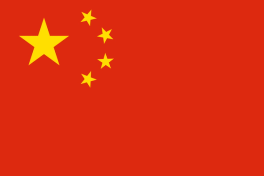Donate to Support Supercluster
Your support makes the Astronaut Database and Launch Tracker possible, and keeps all Supercluster content free.
SUPPORTSupercluster on Patreon
Your support makes the Astronaut Database and Launch Tracker possible, and keeps all Supercluster content free.
SUPPORTThis goes
to space
Jilin-1-02F
Jilin 1 satellites are a series of Chinese commercial remote sensing satellites for high definition video within the Jilin-1 constellation
This series is designed and owned by the Chang Guang Satellite Technology Co.
The Jilin-1 High Resolution 02 satellites feature an imaging system with a resolution of 0.75 m in panchromatic mode, better than 3 m in multispectral mode, an image swath of 40 km from a 535 km high orbit.
The first set of satellites were launched by Long March 2D in Jiuquan Satellite Launch Center on 7 October 2015.
On this
rocket
Kuaizhou 1A
The Kuaizhou 1A (KZ-1A) is a Chinese commercial small-lift orbital launch vehicle, developed by the China Aerospace Science and Industry Corporation (CASIC). It is part of the Kuaizhou family of rockets, originally designed as quick-response military payload carriers. The Kuaizhou 1A was created to offer a more commercially viable version, targeting the growing small satellite launch market. It is a solid-fueled rocket with a high degree of reliability and rapid launch capability, which allows it to deploy payloads into low Earth orbit (LEO) within a short preparation time.
Specs
Height: 19.4 meters (63.6 feet)
Diameter: 1.4 meters (4.6 feet)
Liftoff Mass: 30 metric tons
Payload to Low Earth Orbit (LEO): 300 kg (661 lbs) to 200-300 km altitude
Payload to Sun-Synchronous Orbit (SSO): 200 kg (440 lbs) to 700 km altitude
Stages: 3 solid-fuel stages + 1 liquid-fuel upper stage
The KZ-1A stands out due to its compact size and relatively low cost, making it appealing to customers needing to launch small satellites, including those for Earth observation, communication, and technology demonstration purposes. It is capable of carrying payloads up to about 200 kg to a 700 km Sun-synchronous orbit (SSO). The Kuaizhou 1A's operational flexibility and ability to be launched from mobile platforms add to its appeal for both governmental and commercial clients, making it a key player in China’s expanding commercial space sector.
The rocket made its maiden flight on January 9, 2017, and has seen several successful launches since then, showcasing its effectiveness in placing small satellites into orbit.
From this
launch site
Jiuquan Satellite Launch Center, People's Republic of China
The Jiuquan Satellite Launch Center is a Chinese spaceport located in the Gobi desert, about 1,600 km from Beijing. It is part of the Dongfeng Aerospace City.
Here's where to view Jilin-1 02F
GET THE SUPERCLUSTER APP
THE SUPERCLUSTER PODCAST
A podcast exploring the amazing milestones that changed space history, the wildest ideas that drive our future, and every development in this new Golden Age of Space.
Donate to support
Your support makes the Astronaut Database and Launch Tracker possible, and keeps all Supercluster content free.
SupportCOPYRIGHT 2021 SUPERCLUSTER LLC
